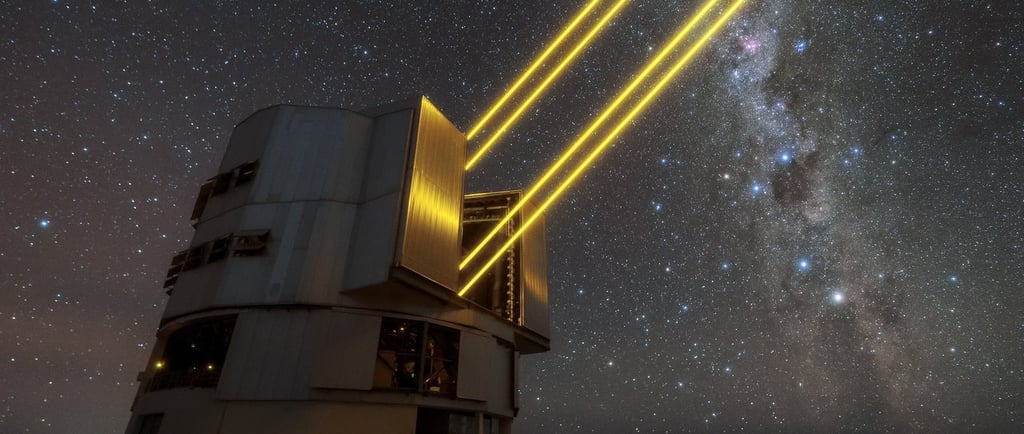The Very Large Telescope Lasers In


The Very Large Telescope
The European Southern Observatory's Very Large Telescope (VLT) is one of the most advanced astronomical facilities in the world, located at the Paranal Observatory in Chile. The VLT consists of four individual telescopes, which can work together to achieve remarkable resolutions and gather stunning details about astronomical phenomena. One of the innovative techniques employed by the VLT is the use of lasers to create artificial stars in the Earth's atmosphere.
The Purpose of Creating Artificial Stars
Artificial stars play a crucial role in compensating for the distortion caused by the Earth's atmosphere. Atmospheric turbulence can blur images of celestial bodies, hindering astronomers' ability to observe faint objects. By utilizing lasers, the VLT generates artificial stars at an altitude of approximately 90 kilometers. These stars are not real stars; instead, they are created when the laser beams excite sodium atoms located in the upper layers of the atmosphere.
How Laser Technology Works at the VLT
The VLT employs powerful 589 nanometer sodium lasers to strike the ionized sodium atoms in the atmosphere. When these atoms get excited, they emit light, visually resembling stars. Astronomers can then track these artificial stars to understand how the atmosphere distorts light from real celestial objects. This information is crucial for applying adaptive optics, a technology that helps correct the distorted images so that astronomers can observe the universe with far greater clarity.
The laser guide stars provide reference points for astronomers. By comparing the position of these artificial stars with actual celestial objects, the VLT can adjust the optics in real time, counteracting the effects of atmospheric turbulence. This revolutionary technique significantly enhances the quality of images obtained from the telescope, enabling researchers to delve deeper into the cosmos.
The Impact of the Very Large Telescope on Astronomy
Since its inception, the VLT has transformed our understanding of the universe. The ability to create artificial stars allows for unprecedented observations, from mapping distant galaxies to studying the intricacies of star formation. The advanced capabilities of the VLT, augmented by its laser technology, have positioned it as a cornerstone of modern astronomy.
In conclusion, the VLT's innovative use of lasers to create artificial stars exemplifies how technology can overcome natural obstacles in scientific research. By simulating stellar conditions in the upper atmosphere, the VLT enhances our ability to observe the cosmos, leading to breakthroughs in our understanding of the universe and its myriad wonders.
